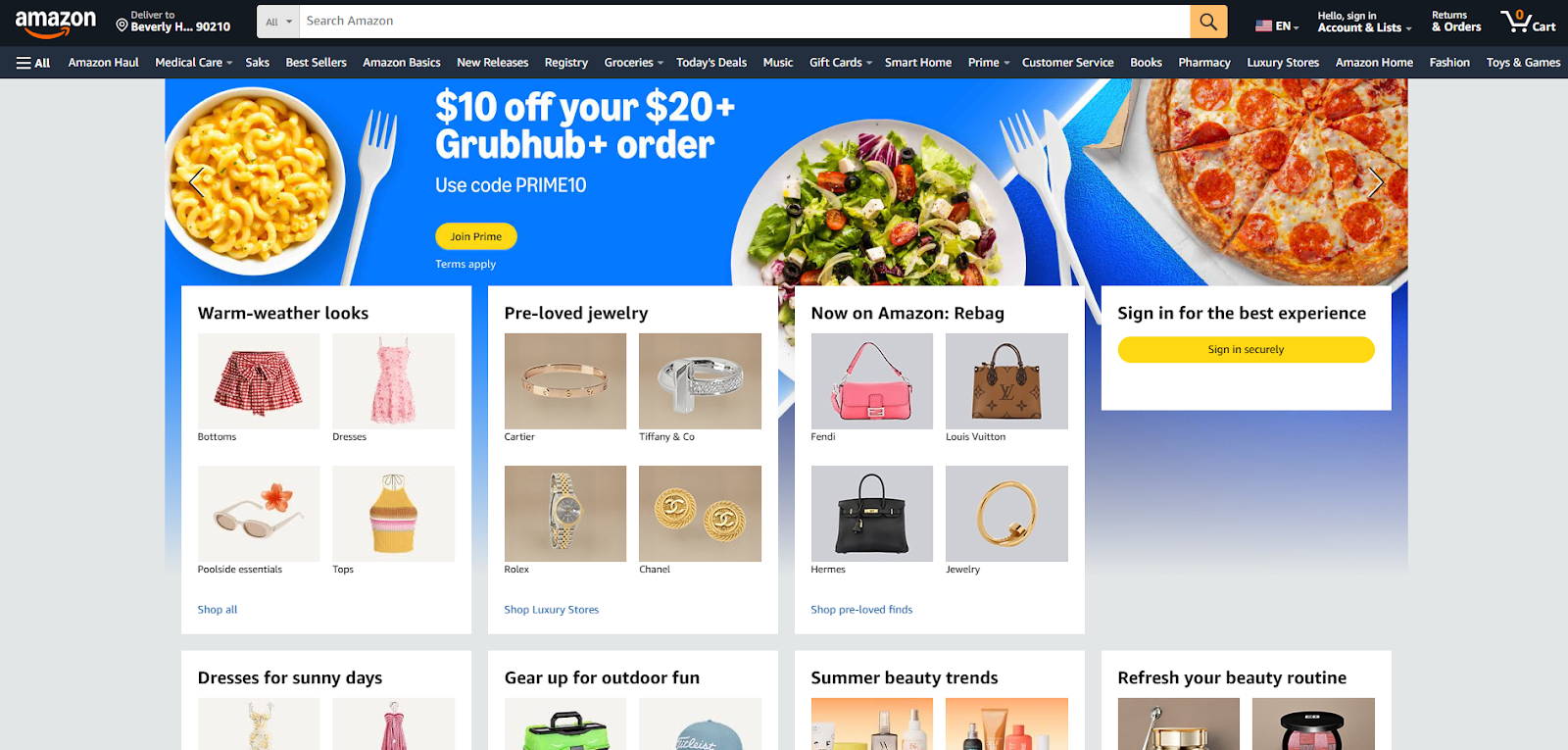Selling on an ecommerce platform like WooCommerce offers you maximum control over your online store, marketing, and product positioning.
However, to expand your global reach and attract new customers who might not otherwise discover your products, consider selling on multiple marketplaces in addition to your ecommerce store. These channels provide access to existing audiences, enabling you to reach more customers in various locations.
Top multichannel marketplaces connect with a diverse global audience. Let’s explore some popular options to see how they can aid your growth.
You’re likely familiar with leading online marketplaces for multichannel selling, such as Amazon and eBay. Other notable platforms with similar reach include Walmart, Etsy, and social media marketplaces like TikTok Shop. Additionally, some platforms cater to specific regions, like OnBuy and Kogan.
Here are factors to consider when selecting the right marketplaces for your business:
- Key features: Identify unique features that benefit sellers or attract your target audience. Ensure the platform’s capabilities align with your offerings (e.g., if you sell subscription boxes, the platform should support recurring orders).
- Pricing: Understand the platform fees and calculate whether they will be offset by reduced marketing costs due to the platform’s existing audience.
- Audience and reach: Research the key demographics of each marketplace and determine if they align with your ideal customer. Ensure a sufficient portion of your audience uses the marketplace you choose.
- Ecommerce integration: The marketplace should be compatible with your ecommerce platform. Direct integration streamlines the selling process and automates inventory management.
Remember, you don’t have to commit to just one of these online sales channels. You can sell on multiple channels or test an online marketplace before migrating all your products.
Let’s examine the top multichannel marketplaces:
1. Amazon

Amazon has evolved from an online bookseller to a comprehensive marketplace, expanding with brands like Whole Foods Market. Most of Amazon’s products come from other marketplace sellers, including ecommerce businesses seeking to reach new audiences.
Features
Amazon’s long history provides time-tested features like Amazon Prime, its membership program for frequent customers. Key advantages of selling on Amazon include:
- Global availability, with the option to set up an account from nearly any country.
- Phone support in most countries, with chat and email in others.
- The ability to set your own prices.
- A platform to create and advertise your offers, including lightning deals and Amazon Coupons.
- Easy review collection with a familiar system.
- The ability to build your products and store around search engine keywords.
- Performance metric tracking, such as order defect rate and fulfillment cancel rates.
- Pre-set product page layouts to simplify setup.
- The Amazon Brand Registry for extra intellectual property protection.
Amazon sellers can also sign up for Fulfillment by Amazon (FBA) to have Amazon handle shipping. With FBA, you can offer two-day Amazon Prime shipping, adding





